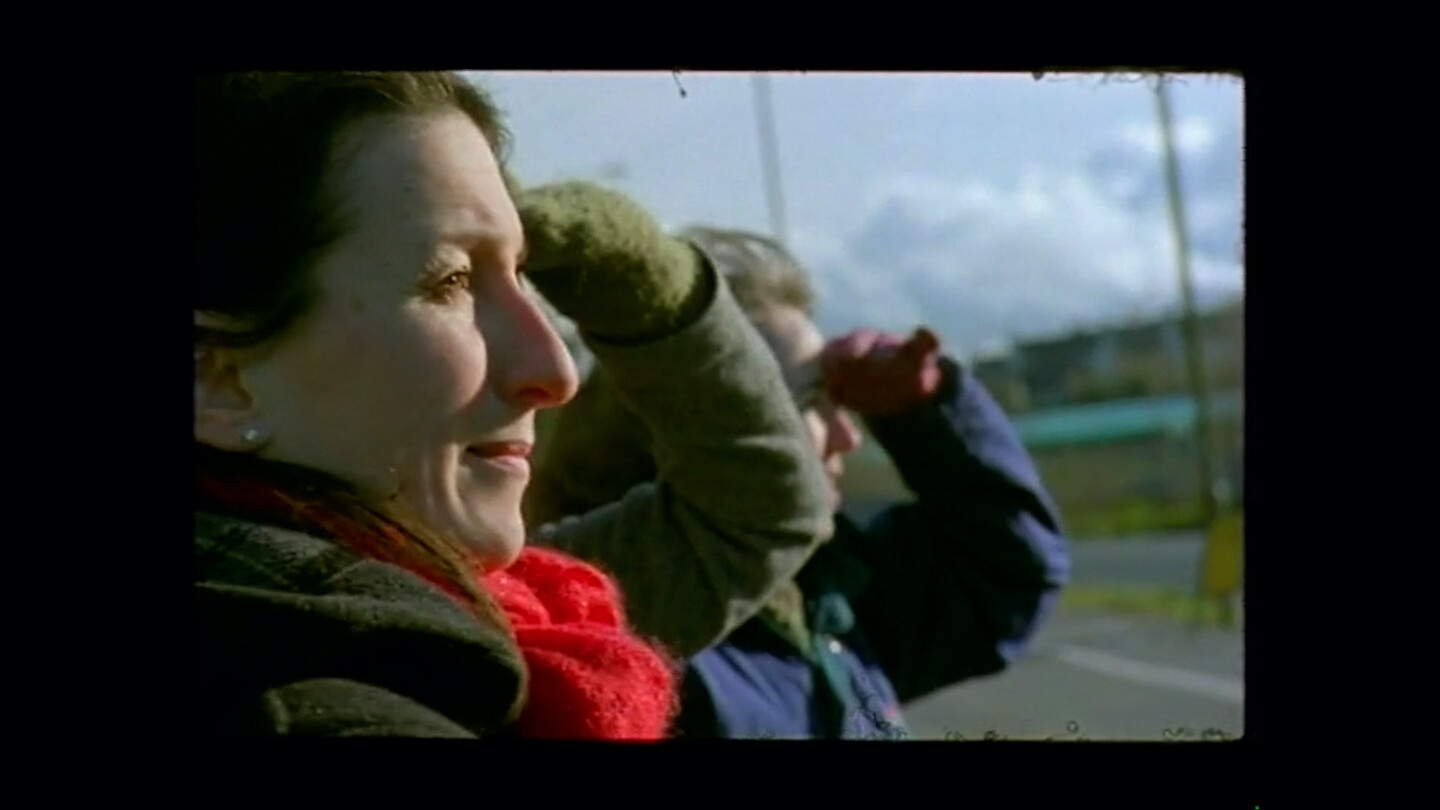Screaming from the Inside: Week #6
The Call of the Wild
Monster Chetwynd
2007
6 Minutes
Artist Cinemas
Date
August 22–28, 2022
Spartacus (one of the previous names for Monster Chetwynd) spent September 2006 living in Edinburgh, where she worked with different women she met, including students on a pattern-cutting course, a knitting demonstrator, and a costumier. Together they devised a trip to the Isle of Lewis in the Western Isles to make the short film The Call of the Wild. The film twins events on Lewis with the women’s lives in urban Edinburgh. The finished film draws on cinematic influences such as Walkabout (dir. Nicolas Roeg, 1971), Picnic at Hanging Rock (dir. Peter Weir, 1975), and the anthropological film Les maîtres fous (1955) by Jean Rouch.
The Call of the Wild is the sixth and final installment of Screaming from the Inside, an online program of films and accompanying texts convened by Camille Henrot as the eleventh cycle of Artist Cinemas, a long-term, online series of film programs curated by artists for e-flux Video & Film.
The film is presented alongside a text response by Jacob Bromberg.
Screaming from the Inside runs in six episodes released every Monday from July 18 through August 29, 2022, streaming a new film each week accompanied by a commissioned interview or response published in text form. The program wraps on Monday, August 29 with a one-day repeat of all the six films presented, streaming through Tuesday, August 30.
On The Call of the Wild
By Jacob Bromberg
Land spoils with its burial. Makes new ground.
We have the wilderness surrounded—at ground level at least, above foundation. But domestication, like any other domination, is contingent. And the wild is contingency itself, a condition within us and beyond us. Look around, look in circles. The camera pans 360 degrees clockwise in the women’s workshop, the women ring the rosie both with and against the clock—the world is a Klein bottle of encirclement.
When is the last time you lost reception?
The call of the wild does not take a breath, just lulls like wind. The inchoate screams take shape in our ears, an apophenix:
Oh——No——Go——
We are pattern makers. We cannot help but build from, round up from zero. As if zero
A member of the jury asked me to describe my conception of reality. I said something about an ever-different differentiation, prompting my advisor to ask how could anyone understand anything—how could anything function at all. Two years later on a slow local train in Italy, out of the goddamned blue, the thought “pattern recognition” shot into my head like a cosmic arrow.
Jack Spicer compared souls to transistors. The droning choir of women’s voices incarnates this—incarnates the call of the wild itself—and their throats become like windsocks.
What importance you
tell the outward whatever
from the inward thing
But the film’s juxtaposition of mundane sights with a nearly omnipresent sound that has no visual marker doesn’t only present as a case of embodiment. The call of the wild is also—and simultaneously—barred entry, repressed, and spilling over. The world may be innervated by the wild, but other registers are at work, too. The mechanical sound of patterns being sewn contests the call with an alien order and the rocks speak in silent intervals.
Symbolism (if that’s what we might call it) always risks misinterpretation, oversimplification. The fact that the film’s human focus is on women, for example, doesn’t necessarily mean it seeks to essentialize women in their relationship to nature, but much more likely to present them as meronyms chosen for the surplus signification they afford. The human relationship to the wild shows itself to be especially complicated and rich when taking into account the transcultural association of women with nature, the perennial attempts to domesticate women (patriarchy as homemaker-maker), and the porosity of life in the female body. But what of the eldritch voice emanating from the rocks (or the holes in the rock formations)? Do they speak to distinguish the material wilderness from the immanent wild? To remind us that the wild resists reason just as reason tries to resist the wild? Mystery is a joke that doesn’t die
It just edges you
I guess you had to be here
And when again
Anything can be
The punchline the
End in itself isn’t
Our giddy knowledge
But a churchyard for
Reseeding wild pansies
-
Jacob Bromberg is a multi-media poet and translator. His work has appeared in/been exhibited at The Paris Review, The Brooklyn Rail, The Believer, Le Monde, The Palais de Tokyo, the Fiorucci Art Trust’s Volcano Extravaganza, and Yvon Lambert Bookshop among other venues. He was The Brooklyn Rail’s inaugural Poet-in-Transit, and his collaboration with Camille Henrot, Grosse Fatigue, won the Silver Lion at the 2013 Venice Biennale. Their other collaborations have since been presented widely around the world.
For more information, contact program@e-flux.com.
